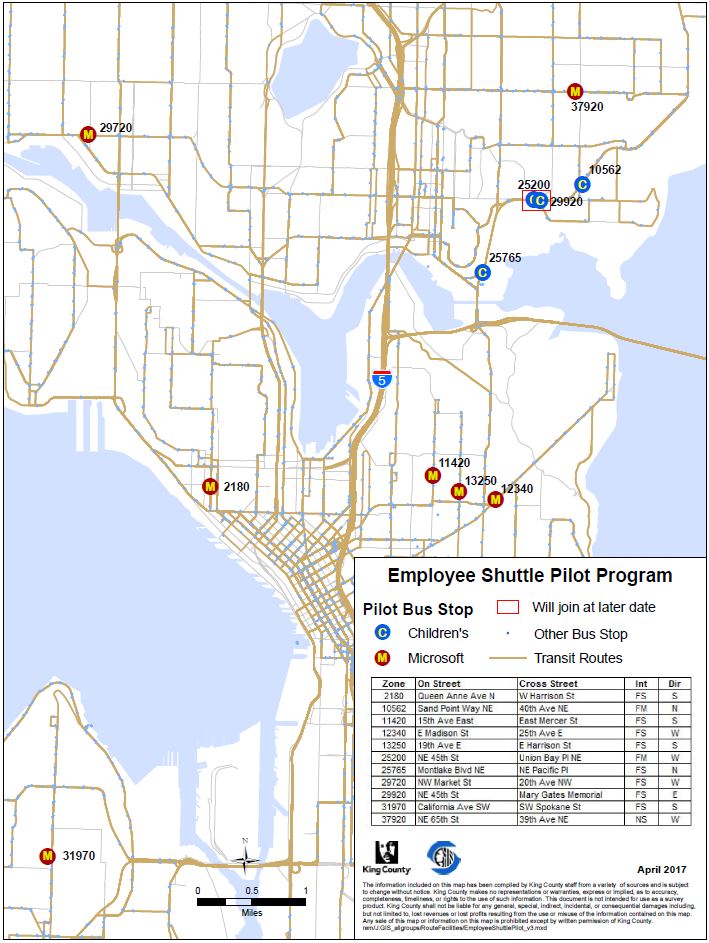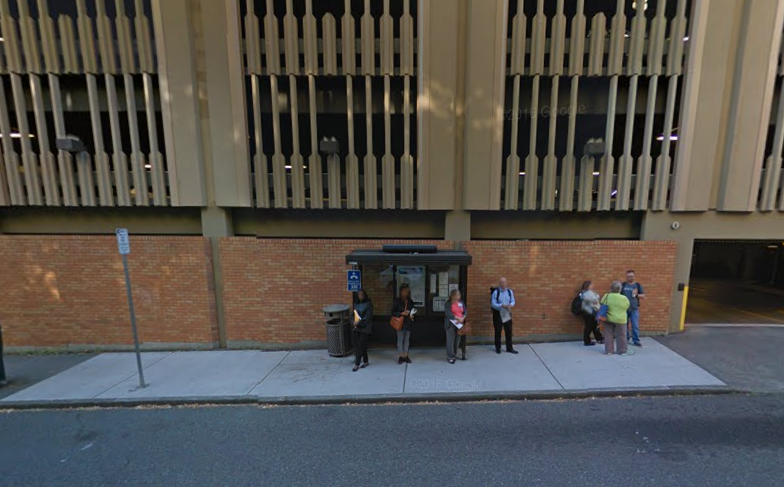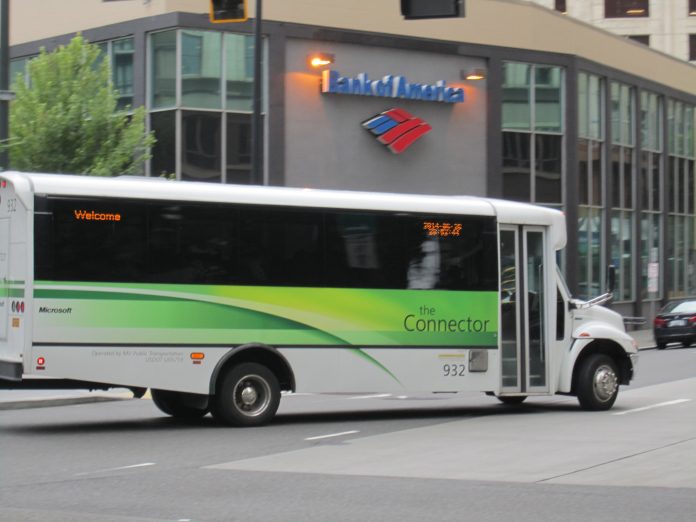A new pilot program for shared transit stops launches today. The City of Seattle, King County Metro Transit, and employers from Microsoft and Children’s Hospital have come together to create a pilot program that allows private shuttle buses operated by participating companies to use public transit stops. A total of 11 different bus stops will be used by Microsoft (seven stops) and Children’s Hospital (four stops) in the initial six-month trial period.
Each stop used by a private shuttle will be clearly identified with unique signage. Seattle and Metro plan to evaluate the pilot program to determine how well it works operationally. If successful, the program may be expanded in the future to allow other employer shuttles to share and add transit stops.
According to SDOT, the employers participating in the program have all paid permit fees to use the 11 stops. Employers pay an annual $300 fee per vehicle to permit use of the bus stops with the permit fees going to the Transportation Operating Fund.

Children’s Hospital, University of Washington, Amazon, Microsoft, and many other private companies have increasingly relied upon private shuttle buses to move their employees between job locations and even between home and work. In some cases, the locations have been ad hoc. In others, the employers have sought right-of-way improvements to provide formal shelters and stops for their employees.

This program could provide public benefits to the general public and employees using shuttle buses, including some of the following:
- Employers seeking to use existing and new transit facilities could ultimately have to cost-share in the maintenance and upgrades to the stops, which could result in better quality stops overall (e.g., more shelters, better lighting, and additional seating);
- Employees using shuttle buses can more easily and directly transfer to and from the public bus network;
- Formal loading and unloading areas make the dwelling process safer for all users of the right-of-way;
- Existing transit facilities will have higher overall utilization and increase the important of pedestrian-oriented investments nearby; and
- Sharing facilities means that less pressure is put on limited curb space that could be allocated to other uses.
Of course, the policy shift could be somewhat controversial given that private shuttle systems–particularly those operated for technology companies–have been met with resistance and resentment in cities like San Francisco and Seattle due to gentrification. Putting private shuttles buses at public transit stops brings that issue front and center. Another consideration of the policy is how private shuttle buses, especially longer-distance ones, may undermine or grow the constituency for public transit, if at all. Requiring the pilot program to produce metrics on ridership habits for private shuttle bus users could prove useful in understanding the relationship to public transit.
UPDATE (5/4/17): SDOT responded to comment providing details on the permit fees.
The featured image is courtesy of SounderBruce on Flickr.
Stephen is a professional urban planner in Puget Sound with a passion for sustainable, livable, and diverse cities. He is especially interested in how policies, regulations, and programs can promote positive outcomes for communities. With stints in great cities like Bellingham and Cork, Stephen currently lives in Seattle. He primarily covers land use and transportation issues and has been with The Urbanist since 2014.



